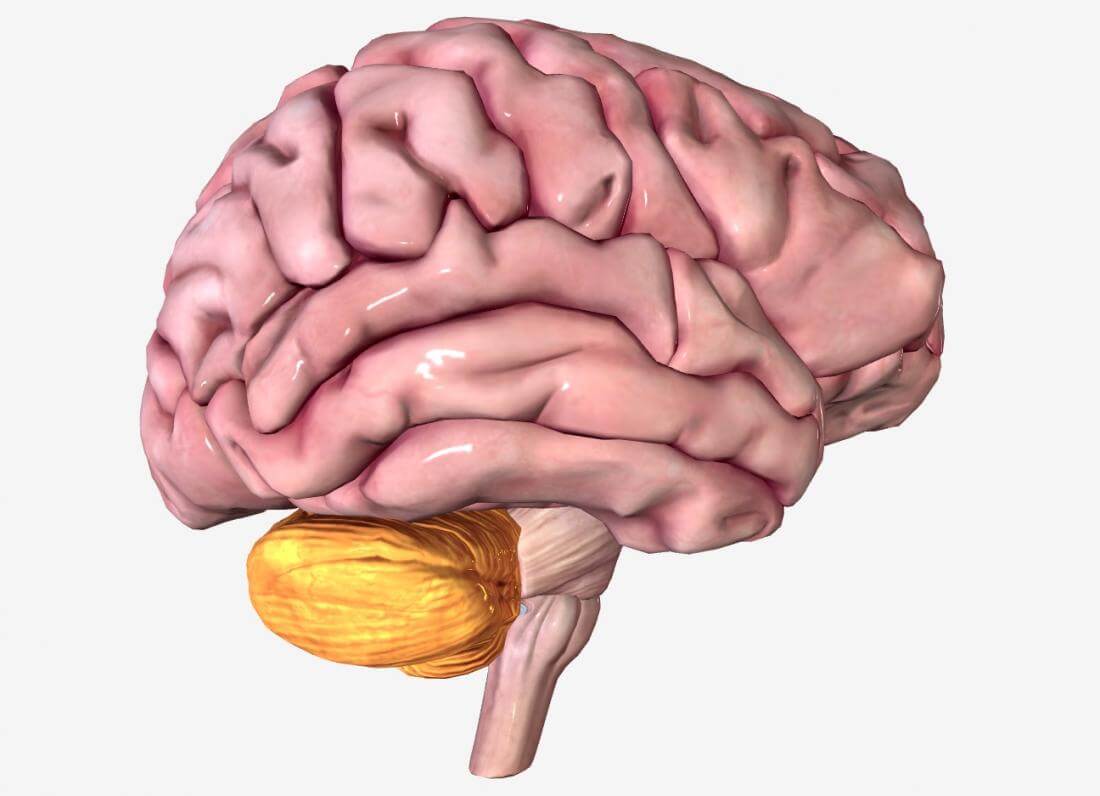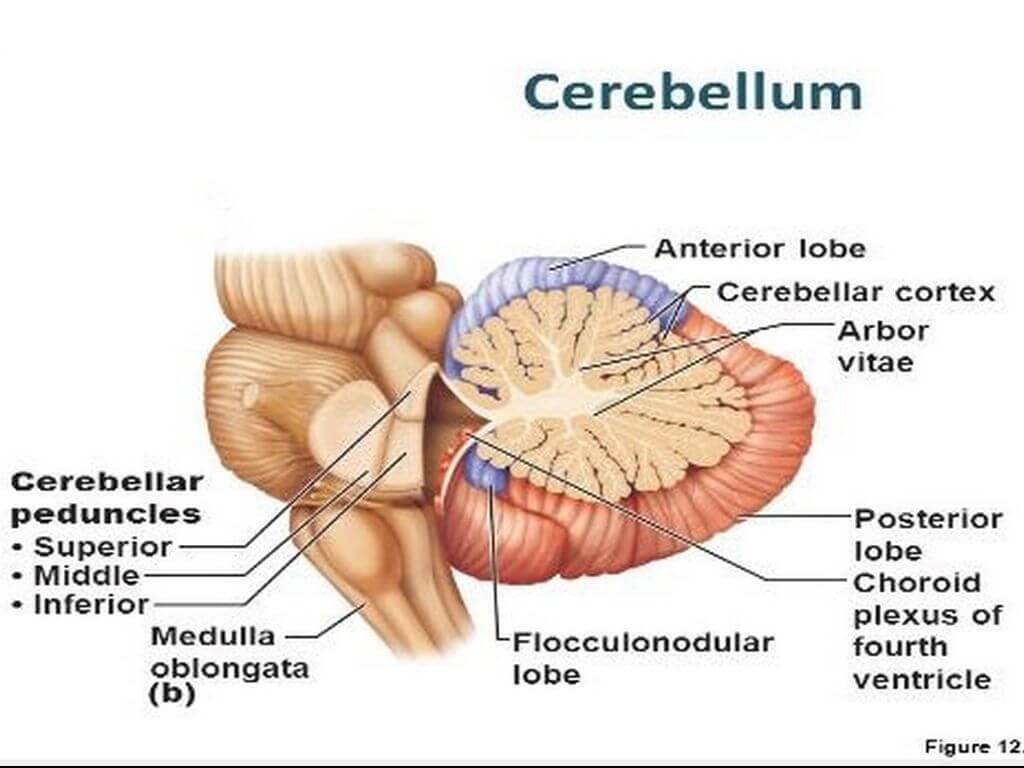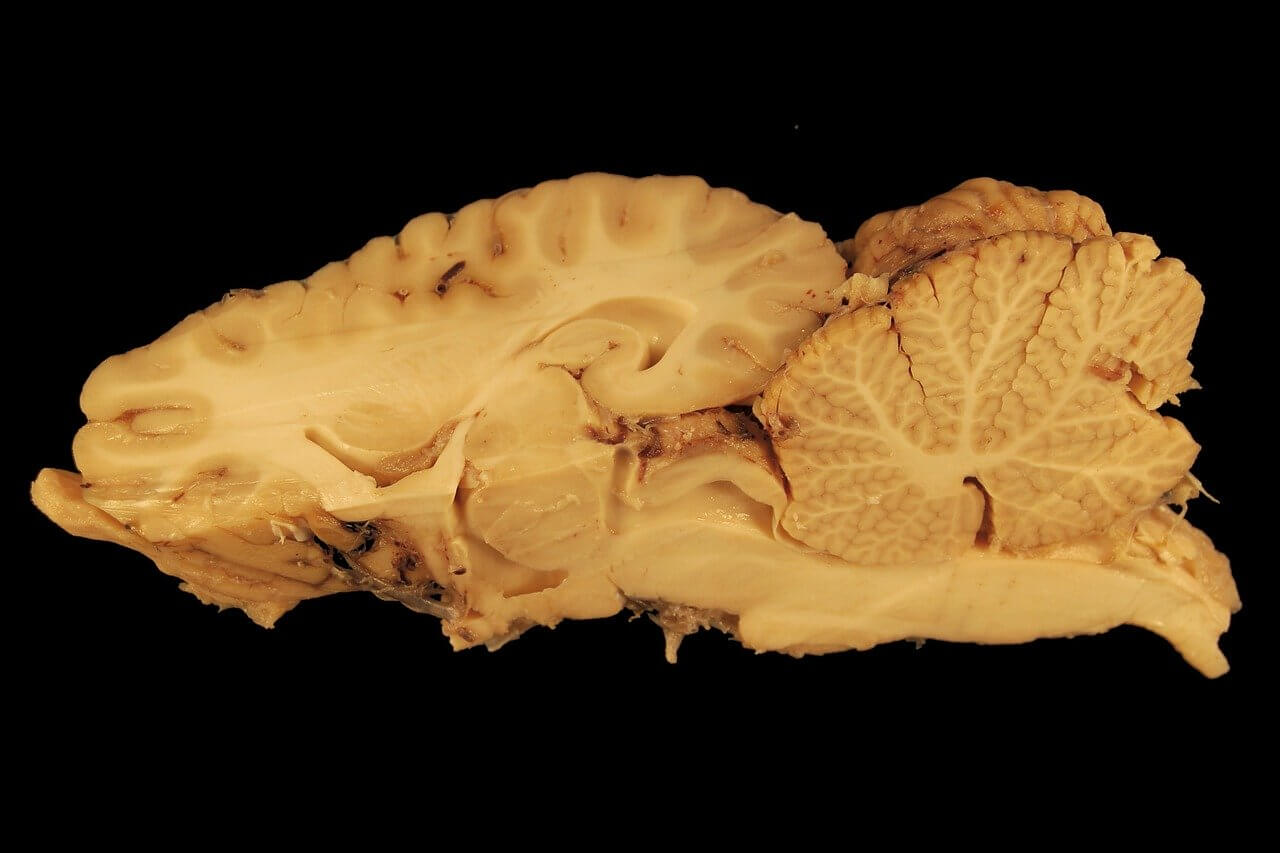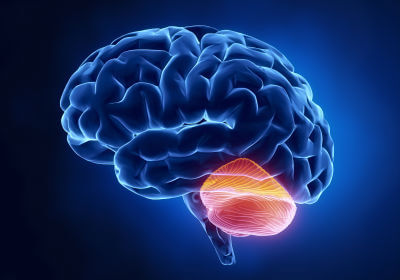The cerebellum is a structure of the central nervous system. It is the largest part of the brain after the brain. It is located in the back and inferior part of the skull.
The main function of the cerebellum is to integrate motor and sensory pathways. In short, it receives information and orders from the cerebral cortex and connects them with the locomotor apparatus. It also takes care of some processes of memory, language, attention, learning among other functions. However, the cerebellum is not responsible for any of the functions of the olfactory system.
The cerebellum is also responsible for physiological tremor. It is for this reason that in the face of an injury in this part of the brain there is no paralysis but disorders can be generated in motor performance, balance or body postures.

Characteristics Of Cerebellum
1. Appearance
The cerebellum is a structure located at the base of the brain, just above the brainstem. It is divided into two hemispheres and has a unique appearance compared to other parts of the brain. Here are some characteristics of the cerebellum’s appearance:
- Size: The cerebellum is relatively small in comparison to the rest of the brain, accounting for only about 10% of the total brain mass.
- Shape: The cerebellum has a distinctive shape, with deep grooves or fissures on its surface called sulci, which divide it into different lobes and hemispheres.
- Texture: The cerebellum has a finely textured surface, with many tiny folds and ridges called folia. These folia increase the cerebellum’s surface area, allowing for more neurons to be packed into a smaller space.
- Color: The cerebellum is a grayish-pink color, similar to the rest of the brain.
- Location: The cerebellum is located at the back of the brain, just above the brainstem and below the occipital lobes of the cerebral cortex.
Overall, the cerebellum’s appearance reflects its important role in coordinating movement and balance, as well as in other cognitive functions such as language and attention.
2. Anatomy
It is constituted by two hemispheres in whose center there is a small cavity called Vermis. The narrow structure is shaped like a worm. There the unconscious nervous pathways lodge or end.
3. Function
As we have already mentioned, its main function is to coordinate the sensory and motor pathways. That is, it causes the muscles to react to sensory stimuli. It is the cerebellum that reacts or responds quickly in front of a signal of external danger and sends the signal to the brain so that it reacts quickly and the reaction takes place.

4. Neurons
Neurons is the name given to nerve cells along with their extensions. Within the cerebellum are about 50% of all neurons of the brain but its size in relation to the brain is 10%.
5. Functions of the cerebellum according to the lobes
Keep the balance. This function corresponds to the fl uculo-nodular lobe.
It acts in the conservation of muscle tone, a function that corresponds to the anterior lobe.
It intervenes and regulates the automatic and voluntary movements. It also coordinates the skeletal muscles. This is a specific function of the posterior lobe.
6. Types Of Connection
The cerebellum establishes different types of connection with the cerebellar trunk. This connection is possible through some cords called cerebellar pendulums. There are 3 types:
Cerebellar pendulum superior. They are motor fibers that come from the central nuclei of the cerebellum to the brainstem.
Cerebellar pendulum medium. They are the thickest of the three. They connect the annular protuberance with the neo-cerebellum.
Lower cerebellar pendulum. Relate the medulla oblongata and the spinal cord.

7. Division of the cerebellum according to its evolution
The cerebellum is divided into 3 parts according to its evolution:
Flocculum-nodular lobe. It corresponds to the most primitive part of the cerebellum.
Anterior lobe. It is the second lobe in evolution.
Posterior lobe. It is the most recent part in the evolution of the cerebellum.
8. Internal configuration
It is divided into gray matter and white substance
Gray substance: It consists of 4 cerebellar nuclei and the cortex. These 4 cores are:
Fastigial core. It has to do with the functions of balance.
Globular nucleus. It has the shape of the letter “S”.
Emboliform nucleus. It handles the movements of the extremities.
Serrated core. It is the most developed and is the one that connects with the neo-cerebellum.
White substance: It is found in the middle part of the cerebellum. It comes in branched form. For this reason it is called the tree of life.
9. Diseases and injuries
The cerebellum is a critical structure in the brain that is responsible for many important functions, including movement coordination, balance, and motor learning. As such, diseases and injuries that affect the cerebellum can have significant consequences for an individual’s motor and cognitive abilities. Here are some common diseases and injuries that can affect the cerebellum:
- Cerebellar ataxia: This is a group of disorders that result in difficulty with movement coordination and balance due to damage to the cerebellum. Symptoms may include gait abnormalities, tremors, and difficulty with fine motor tasks.
- Cerebellar stroke: A stroke that affects the cerebellum can lead to symptoms such as vertigo, difficulty with balance and coordination, and vision changes.
- Cerebellar degeneration: This is a progressive disease that results in the loss of cerebellar neurons over time. It can lead to symptoms such as ataxia, tremors, and difficulty with speech.
- Traumatic brain injury: Injuries to the head can result in damage to the cerebellum, leading to symptoms such as ataxia, tremors, and difficulty with balance and coordination.
- Cerebellar tumors: Tumors that affect the cerebellum can lead to symptoms such as headaches, nausea, vomiting, and difficulty with movement and coordination.
- Alcoholism: Chronic alcohol abuse can lead to damage to the cerebellum, resulting in symptoms such as ataxia and gait abnormalities.
These are just a few examples of the many diseases and injuries that can affect the cerebellum. Treatment for cerebellar disorders depends on the underlying cause and may include medications, physical therapy, and surgery.

10. Genetic rarity about the cerebellum
Given the functions described above, it would be impossible to believe that a human being could live without a cerebellum. However, there are people who, after the relevant studies, are proven to have been born without a cerebellum.
Although the lack of it at birth could suggest a premature death there are currently registered 9 cases of adults without cerebellum. This phenomenon of malformation and survival accounts for the adaptive plastic capacity of the brain of the human being to the environment. However, it is still a rarity and a malformation with little chance of survival in general.